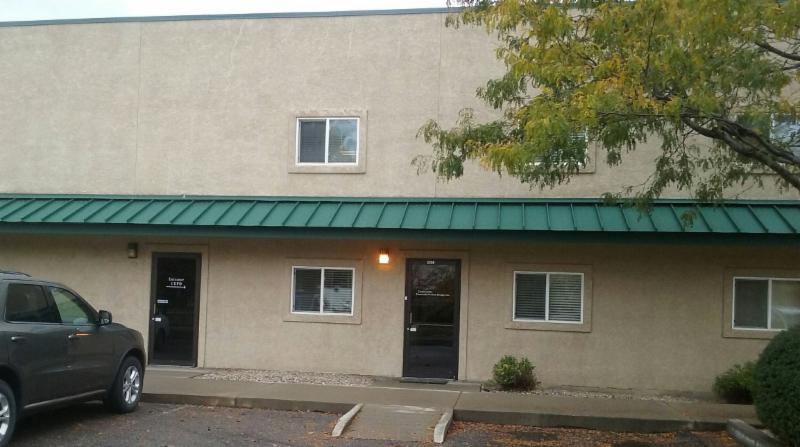|
CEPD News
|
|
(303) 415-1112 Broomfield
(970) 541-4777 Loveland
October, 2017 - Vol 10, Issue 3
|
|

CEPD Loveland is Hosting an Open House This Month
|
|
|
|
|
|
|
IEEE Denver Dine and Learn
|
DSP - FPGA Compute Processing
Technology & Workflows
Mark Moyer of Intel
Beginning with the inclusion of simple multiplier blocks at the 130nM process node, FPGA compute hardware solutions have continually evolved becoming more capable, flexible, and scalable with each generation. These embedded compute elements, together with high density RAM elements, flexible logic modules, and ubiquitous interconnect support implementation of extremely compute intensive algorithms in a power efficient manner.
Growing FPGA compute capabilities provide more options for implementation and more options to manage data flow and for partitioning complex compute operations between hardware and software. Algorithm Developers, Software Programmers, Embedded Programmers and FPGA Hardware Engineers can all contribute to this process and tool chains are evolving to support this collaboration. Complex systems also must be verified which drives the need for a more unified flow that supports all phases of the development process. Higher level tools have evolved to the point where there are several alternatives from which to choose.
|
|
IEEE High Plains Meeting
|
COHERENCE:AN ORGANIZING PRINCIPLE FOR SIGNAL PROCESSING
Dr. Louis Scharf of Colorado State University
In this talk we will begin with a few rudimentary ideas for the representation of signals in the standard Euclidean and Fourier bases, and then talk about filtering in the language of linear algebra. This will establish a framework for talking about coherence as an organizing principle for signal processing. We will demonstrate that many problems in signal processing lead to coherence as a detection statistic for deciding whether there is coherence between signals measured at co-located or distributed sensors. Among several illuminating results, we will establish a defensible definition of broadband spectral coherence among a multiplicity of time series. There will be some statistics thrown into the mix, as we establish that many coherence statistics are distributed as products of beta-distributed random variables. Throughout the talk, linear algebraic ideas will be clarified with geometrical pictures and insights.
|
|
|
|
|
Save the Date
|
CEPD, Loveland at 1339 S. Garfield Avenue, will be hosting an open house in the afternoon on Thursday, October 26th. Stay tuned in to our email for more details prior to the event.
|
|
Quick Tips for Wireless IoT Design Success
|
The Internet of Things (IoT) seems to have disrupted the markets so much that it's actually hard to remember a time when refrigerators and thermostats weren't connected to the cloud. But the demand for a more inter-connected world continues to grow and designers have been challenged to build more and more RF capability into smaller spaces and with more stringent requirements. Here are some tips that CEPD has learned through our continuing venture in the world of IoT. We hope that these can be as useful for you as they have been for us.
· Use series-parallel combinations of antenna tuning components to increase the flexibility of available values. There's no such thing as an 8.00 nH inductor in 1 % values, but placing a 3.3 nH and a 4.7 nH in series will get you there.
· Provide a means for conducting reflected loss (RL) and standing wave ratio (SWR) tests. UMC connectors, for example, are quite small and can be populated for testing and then removed in the future.
· Assume that re-tuning will need to be done for every board revision. RF performance is extremely sensitive to changes and unless the revisions are identical, chances are that something changed and needs to be accounted for in tuning.
· Use MCU manufacturer-provided code libraries for communication link and stack implementation. Most of these have been rigorously tested and even if customizations are needed, it is far easier to modify provided, known-working code than it is to make this from scratch.
· Understand that going into low-power mode is easy; coming out of low-power mode correctly so that service interruption is minimized is difficult; estimate time accordingly.
We hope that these tips can save you time and effort. It is a fascinating time to work on IoT technologies, and we wish you the best of luck in your ventures! -NM
|
|
Services
|
If you would like help developing a new product or if your projects are understaffed, CEPD can help. Our staff draws on years of diverse product design experience to provide creative and timely solutions for your product needs. Some of our specialties include:
- Technical Project Management
- Embedded Systems Hardware and Software
- Digital Signal Processing (DSP)
- Data Acquisition
- Wireless Sensor and Telemetry Systems (Zigbee, Cellular, VHF, Bluetooth, ANT+, etc.)
- IOT
- Control Systems
- Programmable Logic: FPGA / PLD
- Analog Circuit Design
- Switching Power Supply Design
- Battery Charging (all Chemistries)
- PCB Design and Layout
- Analysis, Test and Documentation
We provide cost effective and expedient design options for our clients, regardless of the project's complexity. Our detailed proposals, accurate estimates and time schedules will help you manage each phase of the project.
|
|
|
Sincerely,
The Staff of CEPD, Inc.
© 2017, CEPD, Inc.
303 415-1112 Fax 720 306-4445, Loveland Office 970 541-4777
|
|
| |
|